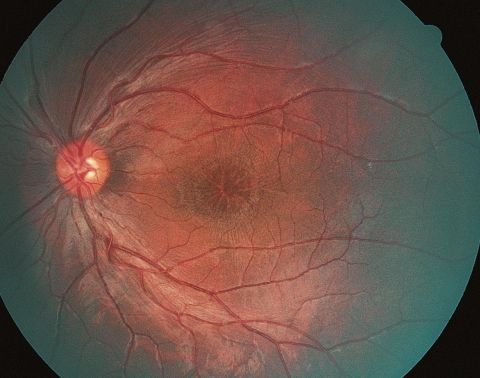At the back of the eye is a layer of tissue called the retina. Cone and rod cells make up this structure, which processes light entering the eye through the pupil. The optic nerve carries visual impulses from the retina to the brain. When the retina separates into two layers, a disease known as retinoschisis takes place that impairs vision.
A layer of retinal cells divides into two in persons with retinoschisis. Depending on where in the retina it occurs, this anomaly can have a variety of effects on vision.
Retinoschisis comes in a variety of forms, both inherited and degenerative.
People who are born with the condition most likely have an X-linked juvenile retinoschisis-type of hereditary retinoschisis. Degenerative retinoschisis is the term for the disease when it progresses with aging.
A person’s vision may suffer from retinaschisis. Depending on where the disease develops in the retina, it will damage vision differently.
For instance, the macula, a region of the retina, is responsible for producing center vision AND allows one to see shapes and colors directly in front of them. The macula may be harmed by retinal schisis, impairing central vision .Daily tasks like reading or driving can be challenging when there are issues with the center of vision.
Peripheral vision issues due to retinoschisis can potentially impact cells outside of the macula. These problems make it challenging for someone to see things that are off-center.
Depending on the kind, retinoschisis has different causes.
A mutation in the RS1 gene causes the majority of juvenile retinoschisis cases. The instructions required by the body to produce retinoschisin are found in this gene. According to studies, this protein keeps the retina functioning properly.
The retina may begin to separate when there is less retinoschisin as a result of this mutation. This split, which affects central vision, frequently takes place in the macular region. Less is known about the cause of juvenile retinoschisis in those lacking RS1 gene abnormalities.
As people age, degenerative retinoschisis develops. Similar to the cause, the condition’s prevalence is higher in older persons.
Genetics is the main source of risk for juvenile retinoschisis. A family history of retinoschisis increases a person’s risk of developing it.
The biggest risk factor for degenerative retinoschisis is age. Retinoschisis is more common in people over the age of 50.
People who have a higher risk of acquiring other eye conditions may also be more likely to develop retinoschisis. For instance, injuries to the eye, eye surgery, severe nearsightedness and diabetes that affects blood vessels in the retina are some risk factors for retinal detachment.
At The Eye Center- Dr. Mahnaz Naveed Shah & Associates our team of eight ophthalmology subspecialists/ eye specialists, eye surgeons who are considered amongst the very best eye specialists in Karachi and in Pakistan, have the diagnostic and treatment capabilities to treat from the simplest to the most complex patients. We work hard to provide our patients with the best possible medical and surgical eye care, in a state of the art purpose built eye care facility. We offer the entire array of medical, laser and surgical treatments to help provide patients the best possible care in the most efficient, safe and ethical manner.
If you need an appointment, please contact us at 03041119544 during our working hours or leave us a WhatsApp message at +923028291799 and someone will connect with you. Walk-in appointments are also available for emergencies. We can also be reached through our web portal on www.surgicaleyecenter.org


